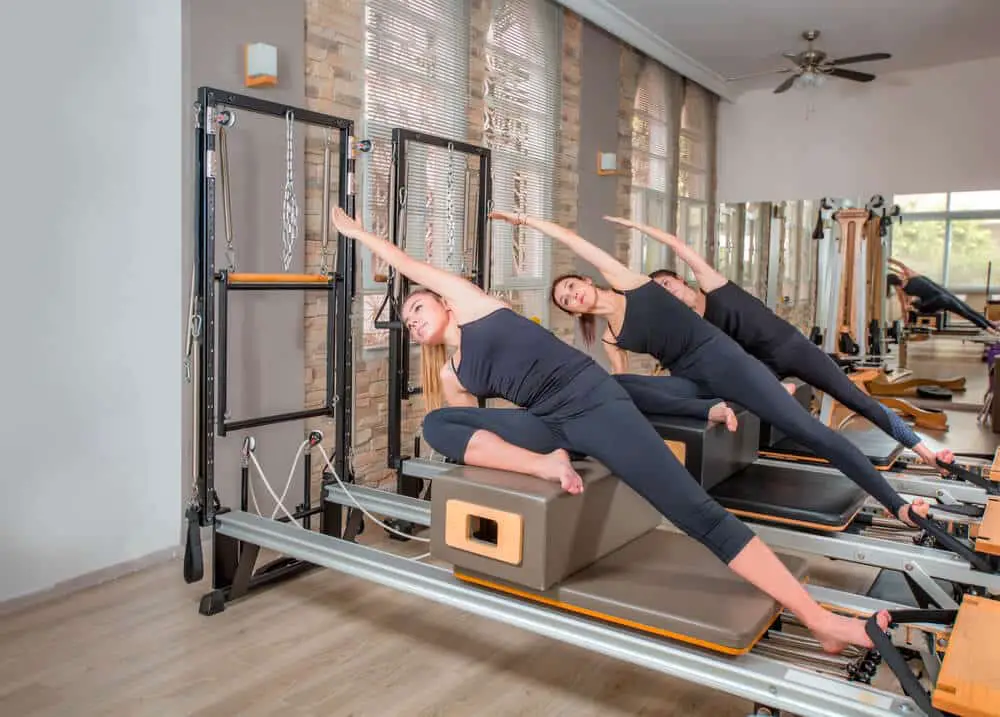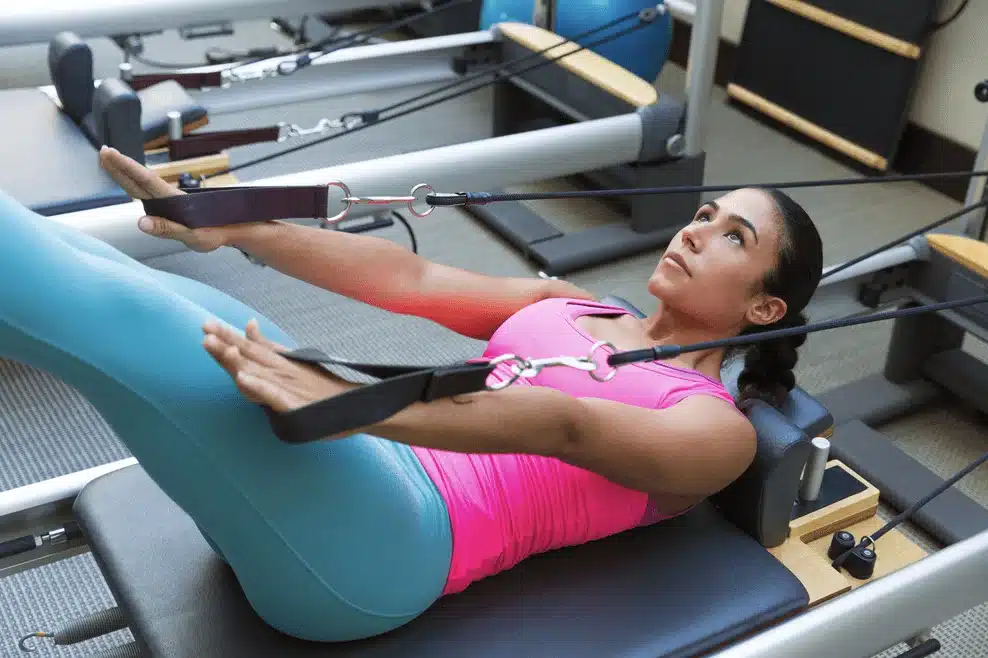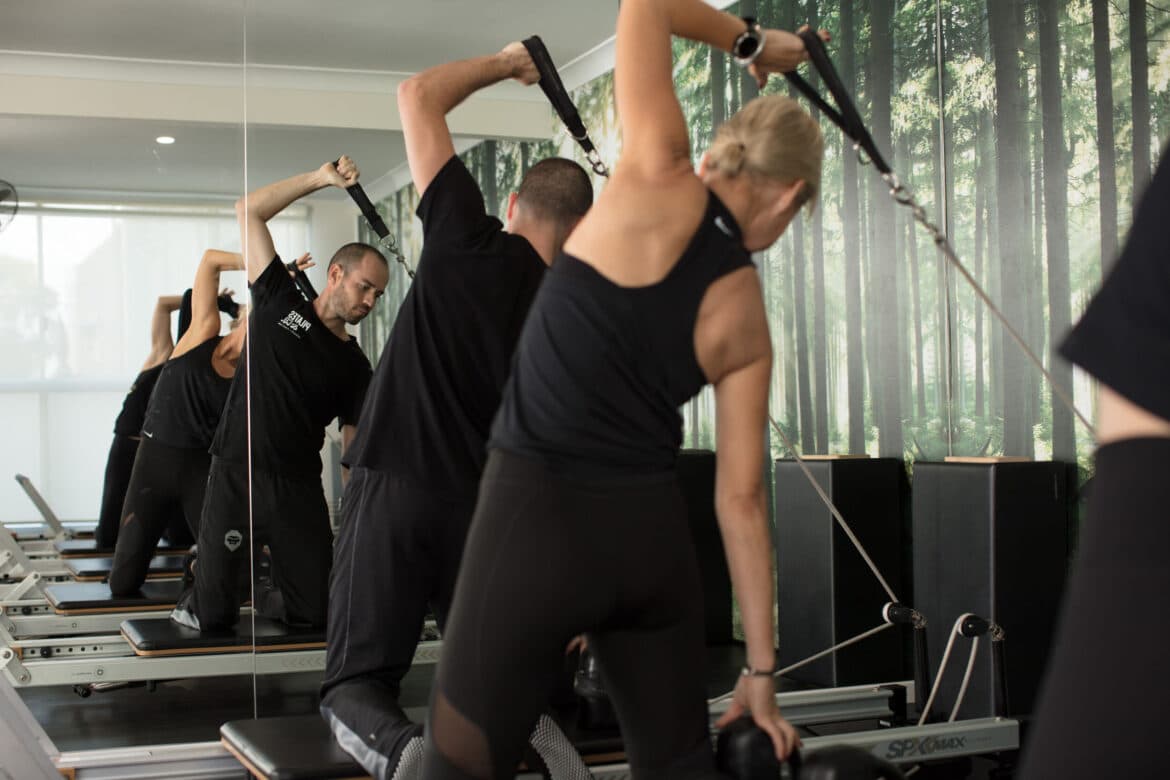Introduction
How Effective Is Pilates For Weight Loss: Pilates, unlike traditional high-intensity workouts, is renowned for its emphasis on core strength, flexibility, and controlled movements. At first glance, it may not seem like an obvious choice for those seeking weight loss. However, the true power of Pilates lies in its ability to address the fundamental aspects of fitness that are often overlooked in more conventional exercise routines. By targeting core muscles, improving posture, and enhancing overall body awareness, Pilates sets the stage for sustainable and long-term weight management.
One of the key factors contributing to Pilates’ effectiveness in weight loss is its adaptability to various fitness levels and needs. Whether you are a beginner or a seasoned athlete, Pilates can be tailored to suit your unique requirements. It provides a low-impact workout that is gentle on the joints, making it accessible to individuals of all ages and fitness backgrounds. The versatility of Pilates equipment, such as the reformer and Cadillac, allows for progressive resistance training, enabling users to gradually increase the intensity of their workouts as their fitness levels improve.
Beyond the physical benefits, Pilates also offers a holistic approach to weight loss by promoting mindfulness and stress reduction. Mind-body connection is a central tenet of Pilates, encouraging participants to focus on their breath and engage their muscles with intention. This heightened awareness not only enhances the quality of the workout but also helps individuals make healthier choices in other aspects of their lives, including nutrition.

Does Pilates help you lose belly fat?
Does Pilates help reduce belly fat? While you’ll certainly burn calories, losing belly fat from Pilates is a myth. You can’t spot reduce fat anywhere on your body, regardless of the exercise. Think of your stored fat like a swimming pool.
Increased Muscle Tone: Pilates engages various muscle groups, including those in the abdomen. Regular Pilates practice can lead to improved muscle tone and definition, giving your midsection a more sculpted appearance.
Enhanced Metabolism: Building lean muscle through Pilates can help increase your resting metabolic rate (RMR). A higher RMR means your body burns more calories even when at rest, making it easier to maintain or achieve a healthy weight.
Improved Posture: Pilates emphasizes proper alignment and posture. By strengthening your core and back muscles, you’ll stand taller and appear slimmer, as good posture can make your belly seem flatter.
Stress Reduction: Pilates incorporates controlled breathing and relaxation techniques. Lower stress levels can help reduce the production of cortisol, a hormone associated with belly fat storage.
Balanced Workout: Pilates is often incorporated into a well-rounded fitness routine that includes cardiovascular exercise and a balanced diet. This holistic approach is essential for overall fat loss.
Can you lose weight by doing Pilates?
Pilates can help you burn a good number of calories, but it may not be a good option for you if you are looking to lose weight fast. It is not as efficient as conventional cardiovascular exercises such as rope jumping, cycling, and jogging. Nonetheless, it can form an integral component of any weight loss plan.
Calorie Expenditure: Pilates burns calories, which is a fundamental aspect of weight loss. The number of calories burned during a Pilates session varies based on factors such as intensity, duration, and individual fitness level. While it may not burn as many calories as high-intensity cardio workouts, Pilates can still be a valuable part of a calorie-burning fitness regimen.
Muscle Building: Pilates engages various muscle groups, promoting lean muscle development. Muscle tissue burns more calories at rest than fat tissue, which means that as you build muscle through Pilates, your resting metabolic rate (RMR) may increase. A higher RMR translates to more calories burned throughout the day, even when you’re not exercising.
Improved Body Composition: Pilates can help improve body composition by reducing fat mass and increasing muscle mass. This shift can lead to a leaner and more toned appearance.
Enhanced Metabolism: Regular Pilates practice can boost your metabolism, making it easier for your body to process calories efficiently. A well-functioning metabolism is crucial for weight management.
How long does it take to lose weight in Pilates?
To lose one pound of fat, you have to burn off 3,500 calories more than you consume. That means if you didn’t alter your diet, and assuming you practice pilates every day, you can expect to lose one pound about every 16 days. Pilates are not as vigorous an exercise as other intense forms of cardio, such as cycling.
Frequency and Consistency: The more frequently you practice Pilates and the more consistent you are with your workouts, the faster you are likely to see results. Aim for at least 3-4 sessions per week for noticeable progress.
Intensity: The intensity of your Pilates workouts matters. High-intensity Pilates sessions, which may include advanced exercises or resistance equipment, can lead to quicker results compared to low-intensity sessions.
Duration: The length of your Pilates sessions also plays a role. Longer sessions that incorporate a variety of exercises are generally more effective for weight loss.
Diet: Weight loss is not just about exercise but also about what you eat. A balanced diet that supports your calorie goals is crucial for successful weight loss.
Individual Factors: Your starting weight, metabolism, age, and genetics all influence how quickly you can shed pounds. Some people may see results faster than others due to these individual factors.
Is 30 minutes of Pilates a day enough to lose weight?
A 155-pound person burns approximately 260 calories in 30 minutes of doing beginner-level Pilates, according to the American Council on Exercise. Pilates can help you build muscle. Muscle tissue burns more calories than fat tissue, so building muscle with Pilates can help you burn more calories and lose weight.
Efficiency: 30 minutes of Pilates can be a time-efficient workout for those with busy schedules. It allows you to engage in regular physical activity even on hectic days.
Muscle Toning: Pilates is excellent for strengthening and toning muscles, including the core muscles. As you build lean muscle, your resting metabolic rate may increase, which can aid in calorie burning throughout the day.
Improved Posture and Balance: Pilates emphasizes proper alignment and balance, which can enhance your overall physique and make you appear slimmer.
Low-Impact: Pilates is gentle on the joints and suitable for individuals of various fitness levels, making it accessible to a wide range of people.
Calorie Burn: While Pilates provides numerous benefits, it may not burn calories as quickly as higher-intensity cardio exercises like running or cycling. The calorie burn during a 30-minute Pilates session may vary depending on factors like intensity and individual fitness level.
Weight Loss Plateaus: Over time, your body can adapt to a 30-minute Pilates routine, leading to diminished weight loss results. To overcome plateaus, you may need to increase the intensity or duration of your workouts.
Is 20 minutes of Pilates a day enough to lose weight?
Is 20 minutes of Pilates a day enough to get results? The short answer is… absolutely! Keep reading to learn how to incorporate 20-minute Pilates challenges into your routine for a consistent and beneficial Pilates practice.
Time Efficiency: A 20-minute Pilates session can fit into even the busiest schedules, making it more likely for individuals to stick with a regular workout routine.
Core Strength: Pilates is particularly effective at targeting core muscles. Building core strength can contribute to improved posture and a leaner appearance.
Low Impact: Pilates is gentle on the joints, making it suitable for people of various fitness levels and those with joint issues.
Calorie Burn: While Pilates offers numerous benefits, it may not burn calories as quickly as high-intensity cardiovascular exercises like running or cycling. The calorie burn during a 20-minute Pilates session may vary depending on the intensity of the workout.
Limited Time for Exercises: A shorter session may limit the variety and number of exercises you can perform, potentially impacting the overall effectiveness of your workout.
Is Pilates alone enough exercise?
Is Pilates Enough of a Workout? Pilates is enough of a workout for one session; however, it’s important to vary your workouts based on your goals throughout your fitness journey. This means performing different styles of workouts that compliment your fitness goals.
Limited Cardiovascular Benefits: Pilates is not a high-intensity cardiovascular workout. While it can increase heart rate and breathing to some extent, it may not provide the same cardiovascular benefits as activities like running, swimming, or cycling.
Calorie Burn: Pilates burns calories, but the calorie expenditure during a Pilates session may be lower compared to more intense forms of exercise. This can make it challenging to create a significant calorie deficit solely through Pilates for weight loss.
Muscle Imbalance: Pilates primarily targets core strength and may not address all muscle groups equally. For a well-rounded fitness routine, to include exercises that engage various muscle groups.
Variety: Pilates workouts can become repetitive over time, potentially leading to boredom or plateaus in progress. Combining Pilates with other activities can add variety to your fitness routine.
Specific Fitness Goals: If you have specific fitness goals, such as building significant muscle mass, increasing cardiovascular endurance, or training for athletic events, Pilates alone may not be sufficient to meet those goals.
Can Pilates change your body shape?
Pilates can change your shape through toning and its emphasis on alignment and improving posture. It’s known for working from the inside out and can give you the appearance of being taller and slimmer. While you can work up a sweat from Pilates, on its own it isn’t the most effective way to lose weight.
Improved Muscle Tone: Pilates engages various muscle groups throughout the body, including the core, legs, arms, and back. Regular practice of Pilates exercises can lead to increased muscle tone and definition. As your muscles become more toned, your body can appear leaner and more sculpted, which can change your body shape over time.
Core Strength: Pilates places a significant emphasis on strengthening the core muscles, including the abdominal muscles and the muscles of the lower back. A strong core not only improves posture but also contributes to a flatter and more defined midsection, enhancing your overall body shape.
Better Posture: Pilates promotes proper alignment and body awareness. Over time, improved posture can create the illusion of a taller, slimmer physique. Good posture also helps you carry yourself with confidence, positively affecting your body shape.
Increased Flexibility: Pilates incorporates stretching exercises that improve overall flexibility. Increased flexibility can lead to longer, leaner muscles, enhancing the appearance of your body and contributing to a more graceful posture.
Why is Pilates so expensive?
The Pilates instructors have spent considerable amount of time, effort and money in order to get themselves trained as instructors. This also means that Pilates instructors have a strong foundation in anatomy and movements as compared to many other fitness instructors.
Specialized Equipment
One of the primary reasons Pilates can be costly is the use of specialized equipment. Traditional Pilates studios often feature machines like reformers, cadillacs, and chairs, which can be expensive to purchase, maintain, and repair. These machines offer resistance and support during exercises, enhancing the effectiveness of Pilates workouts but also increasing the overall cost.
Instructor Qualifications
Quality Pilates instructors undergo extensive training and certification programs to become proficient in teaching Pilates techniques. These programs require a significant investment of time and money. The expertise of a certified instructor adds to the cost of Pilates classes, ensuring that clients receive safe and effective instruction.
Small Class Sizes
Pilates classes are typically small in size to allow for individualized attention and proper form correction. Smaller class sizes mean that instructors can focus more on each client’s needs, but it also means that the cost per participant is higher compared to larger group fitness classes.

Conclusion
Pilates fosters an environment of gradual, manageable progress. Through regular practice, individuals can build lean muscle, increase metabolism, and improve posture—factors that are essential for maintaining a healthy weight in the long term. The adaptability of Pilates means that it accommodates individuals of all fitness levels, making it an accessible option for those just starting their fitness journey or those looking to complement their existing exercise routine.
Pilates is more than just a physical exercise; it encourages mindfulness and stress reduction. The emphasis on controlled breathing and precise movements cultivates a deeper connection between the mind and body, which can lead to better self-awareness and healthier lifestyle choices. This mindfulness extends to dietary habits, promoting a more balanced and conscious approach to nutrition.
Scientific studies have supported the weight loss potential of Pilates. Research has shown that regular Pilates practice can lead to reductions in body fat and improvements in body composition. Pilates has been linked to reduced waist circumference and enhanced muscle tone, both of which are vital components of achieving and maintaining a healthy weight. Real-life success stories also abound, with countless individuals attesting to the transformative power of Pilates in their weight loss journeys. From shedding excess pounds to achieving a more toned and sculpted physique, many have reaped the rewards of consistent Pilates practice.

